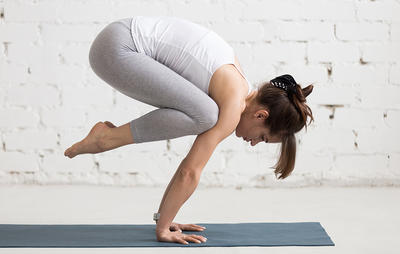Ever dreamed of opening your own yoga studio?
This informative guide explains how to open a yoga studio and start your own yoga business to
make your dreams a reality!
First off, the most important tool you need is determination.
Opening a new business isn’t easy, and you’ll be faced with frequent
obstacles that pop up in the process. And if you don’t have the drive, tenacity,
and determination to break down the barriers, you won’t be opening your
doors any time soon.
Follow These 6 Tips to Open a Yoga Studio and Start Your Own Yoga
Business: So, you’ve written your business plan, the numbers stack up, and
you’ve secured your investment. What’s next?
1. Location, Location, Location
Finding a suitable property within your budget and in the right area of town is
one of the biggest challenges you may face.
When it comes to choosing the right location, you really need to know your
demographic. In major cities around the world, yoga isn’t cheap. It can’t be if
the yoga studios are to succeed with rising rents every few years.
It’s important to work out if there are enough people in your chosen location,
with a disposable income that can afford approximately £16 for a drop-in yoga
class (this is the average cost of drop-ins in major cities).
In major cities around the world, yoga isn’t cheap.
Research different locations and pick an area where there is a high
percentage of the demographics required to run a successful yoga studio.
Locations can vary. Residential communities can work well. We all love
convenience and with more and more choice of yoga studios, clients don’t
want to travel very far.
Opening in a central business district is an alternative option, as long as
there are enough people in that area that fall into the desired demographic.
2. Pick a Place With Transport Links and/or Parking
Depending on your target area, consider how clients will get to your yoga
studio.
You could create the most wonderful space, but if it’s challenging to
get to via public transport or if there is nowhere to park, then people won’t bother.
In a city location, try to find a space within a few minutes walk from a train or
subway or make sure it’s on a bus route. If you place yourself outside of a
built-up area, check if there’s parking nearby. Getting to a yoga class needs
to be easy for people.
3. Scope Out the Competition
The next consideration when choosing a suitable location is checking out the
local competition. How many other yoga studios are in that area? Is the area
saturated?
It doesn’t mean you shouldn’t open your yoga business in that space, but it
does mean you’ll need to bring a better product to the market.
Check the competition out. See what their customer experience is like.
Explore what the quality of teaching is like and what offerings they have. How
busy are the classes at peak and off-peak times? You’ll soon get a sense if
there’s space for more.
4. Determine Your Budget (And Stick to It!)
Your budget will dictate the type of yoga studio you open.
If you are on a tight budget, you will be restricted to opening a smaller space,
perhaps without changing rooms or showers. But, you can make a beautiful
space by doing something simple!
Get students to book-in prior to coming so there’s no need for a reception area or even a receptionist.
Whatever your budget is, always add on a bit more as there are always
hidden costs. Creating a large space offering a boutique customer experience
with showers, changing rooms, and so on will require a much bigger budget.
The size of the space will obviously determine the budget.
How many yoga mats can you fit into the yoga room will dictate your turnover
and how much you’ll need to charge. Work out average numbers you think
are achievable in the classes. Take away the costs and see if the numbers
stack up.
Whatever your budget is, always add on a bit more as there are
always hidden costs and things you didn’t think of from the start.
5. Yoga Studio Design is Key
You can be creative with spaces. Lower ground spaces or spaces without
windows are much cheaper than the street level or retail properties.
Of course, natural daylight is always preferable, but if you’re in a big city, the
high rents can push you out. A basement may be your only option. So get
creative with cosy lighting to make an ambient space.
The point is to work with what’s available to you. Decor and interior design
are key because they create the ambiance and vibe of your entire studio!
Your studio design doesn’t need to be pricey, but it does need to be inviting,
well-curated, and effectively embody your branding.
6. Open Your Doors With Intention
The final step for how to open a yoga studio? Well, after everything else is
set, it’s time to do your marketing and open your doors. Exciting times!
Work out a good schedule. Make sure there are lots of offerings for different
students. I strongly suggest an opening promotion to get people through the
door.
Top tip:
Find local influencers on Instagram and invite them to come to take a
class in exchange for a post on their Instagram account while they are there.
Once clients are there, it’s all about customer experience. The yoga classes
and the teachers are key, but the front of house and cleanliness make the
difference between a positive or negative experience.
Once clients are there, it’s all about customer experience.
In those early days, chances are, you won’t get everything right. And that’s
okay (we are only human after all!). As long as your new students see that
you’re trying to create the best experience possible, you will gain some loyal
customers.
Listen to your new customers. Take notes. Encourage feedback. People love
to be part of a new venture and especially a new yoga studio that they can
call their own. The most successful yoga studios I know of have created a
strong community from the beginning.
People don’t just want to come and take a yoga class. They want to catch up
with like-minded people, to feel connected and heard. Yoga studios, when
done right, can provide a sanctuary. They can become a safe space that
people want to return to daily.
As a studio owner, this is the dream. For your studio to become part of your
customers’ daily ritual, lifestyle, and routine.
It’s also important to make sure that the people you choose to work in the
space – from the yoga teachers to the receptionists to the cleaners – are all
friendly, helpful, and equally as committed to creating an exceptional
customer experience as you are.
There is always a buzz around a new studio opening. The early days are
when everyone talks about you. So it’s essential that everybody gets a warm
welcome. You really can’t afford a bad review.
The Takeaway on How to Open a Yoga Studio and Start a Yoga Business
Opening any new business takes research, planning, investment, and a
willingness to take risks. Opening a yoga business and yoga studio is no
different.
But with determination, hard work, and the initiative to overcome obstacles,
opening the doors to a new community of yogis is immensely rewarding. It’s a
business that makes a difference in people’s lives – holding space to help
their mental and physical wellbeing.
Yoga studios create community and a sense of belonging. They become a
safe space for people to let go of their daily struggles and open up to the
magic of yoga.
Starting a new business is certainly a challenging feat but, with the right
intention and dedication, it could be the best decision you’ve ever made.




